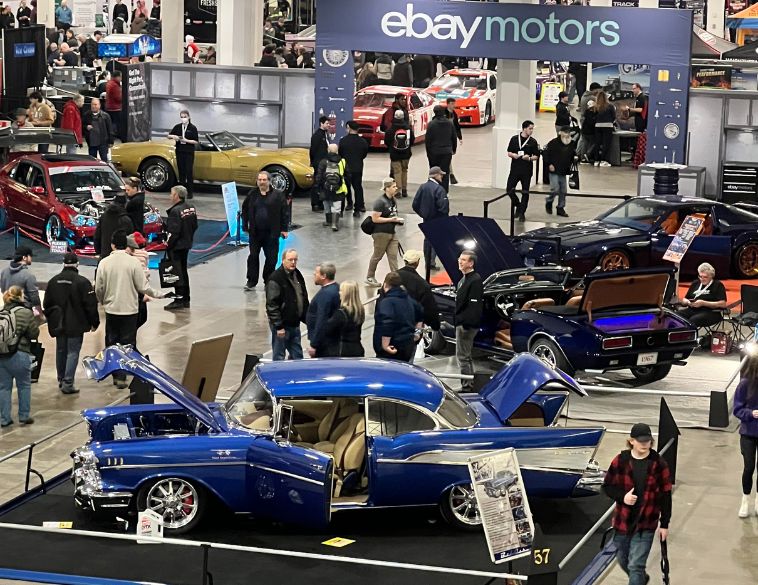Classic style with modern reliability can make vintage vehicles even more appealing.
As we edge further into the 21st century, vehicles that were produced in the 20th become more and more distinctive. Even those manufactured in the 1990s have a different look and feel to those being produced today. Go back further, into the 1980s, 1970s, 1960s and 1950s, style and character becomes ever more distinctive.
And why there is no denying that a great many classic cars and trucks are cool, there are other aspects of them that aren’t always so fun to live with. Depending on the age of the vehicle, features such as manual steering, four-wheel drum brakes, three-on-the-tree transmission, rubber floor mats and primitive bench seats can make driving the vehicle tiring and not enjoyable. While there are those that love to own and drive original condition classics, today, enthusiasts also have many options to upgrade their vehicles with modern technology and creature comforts.
With that said, there is often a fine line in terms of what is deemed acceptable and what isn’t—particularly when the time comes to sell your vehicle or exchange it for another one. Have too few upgrades and the market for your car or truck will be limited—have too many radical modifications and the same applies – what appeals to one person’s personal taste rarely does to another.
Yet within that middle space, there a number of upgrades you can add to typical classic vehicle from the 1960s through the 1980s that will broaden both its appeal and owning pleasure.
Braking systems

Many domestic vehicles manufactured prior to the 1970s came from the factory with four-wheel drum brakes, including high performance muscle cars. Although in some cases, front disc brakes were available, by today’s standards they are barely adequate, particularly for those not used to driving these types of vehicles. According to Ryan Baltjes, Head of Parts and Accessories at eBay (Canada), upgraded brake parts are among the most requested items on the site. “When you put a lot of time and effort into something, like a classic car, you want to have some kind of insurance for it,” explains Baltjes. That’s why he says, an upgraded brake system is often one of the first things added. “You want to make sure it actually stops and you want to avoid those close calls when out on the road.”
At Original Parts Group, which manufacturers reproduction parts for classic General Motors vehicles, Sourcing and Purchasing Manager Wes Nielsen ranks braking upgrades as one of the most popular modifications. While he does note that this can be mixed blessing, particularly if the vehicle came from the factory with front, or even all-wheel disc brakes, modern upgrades can still make a difference. “There are some wonderful upgrades available from aftermarket companies that can be as simple as a rotor upgrade or you can go further with increased rotor sizes and upgraded calipers for much improved stopping power.” Like many aspects of classic car ownership, it often boils down to taste, budget and what you intend to do with the vehicle.
Steering
This often boils down to the age and type of vehicle. Many Domestically built classics from the 1950s onward were fitted from the factory with hydraulic power steering, but again, it was an option in most cases, so there are some examples out there, particularly lower trim level vehicles and trucks that came with manual steering. According to Luc Champagne, co-founder of Distribution Uniplus in Montreal, Que., upgrading from a manual to a power steering system can make a huge difference in the ownership experience and rarely will it detract from the vehicle’s value, unless it is particularly rare and desirable in original condition.
Cooling systems
How many times have you seen a classic car stranded on the side of the road in the summer with the hood up? Probably quite a few. Often a reason is due to overheating. It can be very tempting to add go faster engine parts, performance exhaust and upgraded suspension, but if you still rely on the factory cooling system, which in many cases was merely adequate when the car was new, that can also be an issue. Luc Champagne, who owns a big block 1969 Chevrolet Corvette Stingray 427, notes that cooling system upgrades are one of the best things you can do on a car like this, since they were frequently plagued with issues when they were new. A larger capacity aluminum radiator, electric fans, premium water pump and plumbing can make a big difference. Though, when it comes to changing parts, you need to make sure the replacement will properly fit, particularly when it comes to radiators. Champagne notes this can become an expensive problem, and if a part doesn’t fit correctly, you need to make sure you’re able to return or exchange it.
Fuel Injection
If your classic was built prior to the mid-1980s, there is a good chance it originally came with a carburetor. Even if it has early fuel injection, mechanical or electronic, these systems can be trouble prone and many components for them are now obsolete. According to Wes Nielsen, converting carburetted engines to modern fuel injection is the number one request from OPG customers when it comes to classics. “The advantages of fuel injection have been known for a long time and with companies like Holley, FiTech and others doing simple bolt-on units that replace the carburetor, it’s easier than ever to upgrade to fuel injection.”
Interior
While it’s often said that the exterior body and paintwork can make or break a classic vehicle, many would argue that interior condition and functionality is even more important. According to Ryan Baltjes, interior upgrades are often one area where owners can make the biggest difference in style and functionality of their vehicle for the lowest capital outlay. Trim pieces, replacement seats, upholstery and gauges can all be added fairly inexpensively, plus they can do wonders for comfort, convenience and ergonomics. “It’s often hard to find a new restoration that doesn’t have an upgraded interior,” says Baltjes. At OPG, Wes Nielsen notes that aftermarket gauges are often a popular and cost-effective upgrade. “There are some wonderful upgrades that work within the same location as the factory gauges,” he says. “They give you better operation and information depending on how and what you are looking for.” Beyond that, infotainment and stereo system upgrades are popular, though again, budget and taste often have a hand in the extent to which owners are willing to go.
Driveline
Engine and transmission swaps are often one of the most popular options today, usually in an effort to make the car more powerful, faster and more useable. For your typical North American classic, swapping in a modern GM LS or Ford Coyote V8 can be a viable option, since parts and even complete crate engines are readily available and plug-and-play electronics make it easier than ever before. Nielsen notes that many companies now offer complete LS engine/transmission combinations, making it easier than ever before. Some owners choose to remove the original engine and transmission and keep them in storage, with the option of returning the vehicle to factory stock if needed. Even if you choose to keep the car’s original engine, swapping out the transmission for a modern overdrive automatic or manual can make a big difference in driveability. Tremec’s line of overdrive manuals and GM late-model automatics like the 6L80E can make a huge difference to a vehicle’s enjoyment and drivability.



